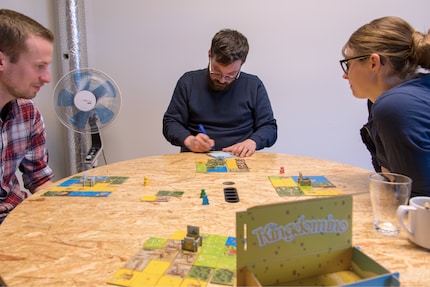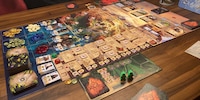
Product test
Five addictive tabletop games for rainy autumn days
by Ramon Schneider
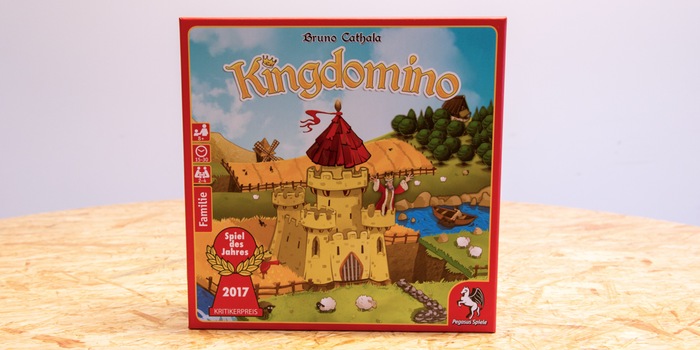
Kingdomino is based on the same game principle as traditional dominoes. However, instead of numbers, the tiles are visualised with different landscapes. The aim is to get hold of the right lands and build your own kingdom.
Game content:
48 dominoes, 4 starting pieces, 4 3D castles, 8 wooden figures, 1 3D tower, 1 scoring pad
Recommended age:
8 years and older
Number of players:
2 to 4 players
Playing time:
15 to 30 minutes
?
At the start of a game, each player is assigned a colour. This includes a wooden figure, a 3D castle and a starting domino. All the dominoes are then shuffled and stored in the large 3D tower. Once this has been set up, the dominoes can be pulled out individually through a small opening at the bottom.
Now you have to draw lots to determine which tile belongs to which player. To do this, one player picks up all the wooden pieces and lets them fall out one by one at random. This determines the allocation of the dominoes from top to bottom. Four pieces are then drawn from the tower again and placed in the same ascending order.
Variants
To spice up the game, you can define additional rules if required. For example, you can introduce the rule that if your castle is exactly in the centre of your kingdom at the end, you receive an additional ten points. Or, if your kingdom is complete and contains no gaps, you receive five special points. You can also give free rein to your creativity and define your own special rules.
Bruno Cathala has created a beautiful game with Kingdomino. The rules are quickly understood and can be expanded as required. In my opinion, the recommended age is set too high. With a little help from their parents, children as young as five can also have a go at this laying game.
The quick play time of just a quarter of an hour makes Kingdomino ideal for short bursts of action. For example, you can tell your children that there's one more game of Kingdomino and then it's bedtime. For adults, however, this game can quickly lose its excitement. Although you can add variety to the game by changing or adding rules, it becomes repetitive after two or three rounds.
I think Kingdomino is a good buy if you have one or more children. However, if you are an adult and are looking for a new game for you and your friends, I would advise you to choose a different game.
I get paid to play with toys all day.
Kingdomino was developed by French game designer Bruno Cathala. His ludography already includes over 30 titles, including Kanagawa and Mr. Jack. Cathala has already won several awards for his creations, including for Kingdomino. In 2017, this placement game won the "Game of the Year" critics' award, took sixth place at the "German Games Award" and was nominated for the French "As d'Or".
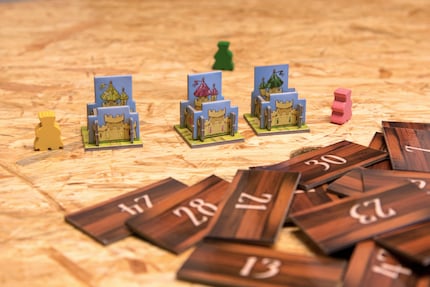
After preparation, four dominoes are drawn from the tower and sorted according to the number on them. The domino with the lowest number is placed at the top of the table by the players and the domino with the highest number at the bottom. Then turn the tiles over so that the "land" side is visible. Basically, the higher the value on the back, the more valuable the land is. Valuable landscapes also have one or more crowns. The more crowns you have at the end of the game, the more points you will receive. But more on that later.
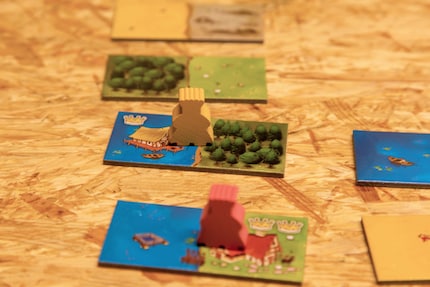
Playing the game
The player whose wooden piece is on the top domino is allowed to start. In all subsequent rounds, the player with the lowest number always starts. The first player takes his domino and starts building his kingdom. To do this, he places the domino on any side of his starting domino. He also places his wooden piece on a piece from the new domino row. Think carefully here, as the tiles with a lower number will give you an earlier turn in the next round, but you will have a worse land tile without crowns. Once all players have had their turn, four new dominoes are taken from the tower and a new round begins.
When you place new dominoes on your kingdom, there are certain rules to follow. All landscape types can be placed on the starting domino. The orientation of your dominoes does not matter. You can also place new dominoes next to dominoes that have already been placed. The numbers must be the same for classic dominoes and the landscape types must be the same for Kingdominoes. If you cannot place the new domino next to either your starting domino or a domino that has already been placed, you will unfortunately have to sit out this round. It should also be noted that your kingdom may not be larger than 5x5 squares. If you plan too little ahead, you may not be allowed to place certain dominoes or gaps may form in your kingdom.
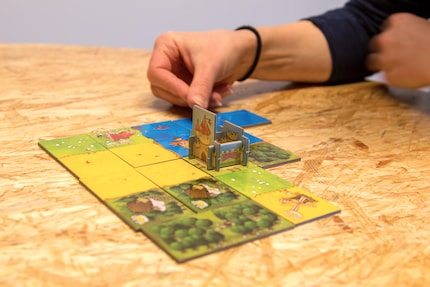
Playing
If there are no more dominoes in the tower, the game is over. Now it's time to add up your prestige points. Your kingdom now consists of several connected landscape types (meadow, water, forest, etc.). The prestige points are calculated by multiplying the number of identical landscape types by the number of crowns they contain. For example, if you have five sand fields with two crowns, you receive ten points for this landscape type. Unfortunately, areas without crowns score zero points. You can note your points on the scoring pad, add them up and determine the winner.
